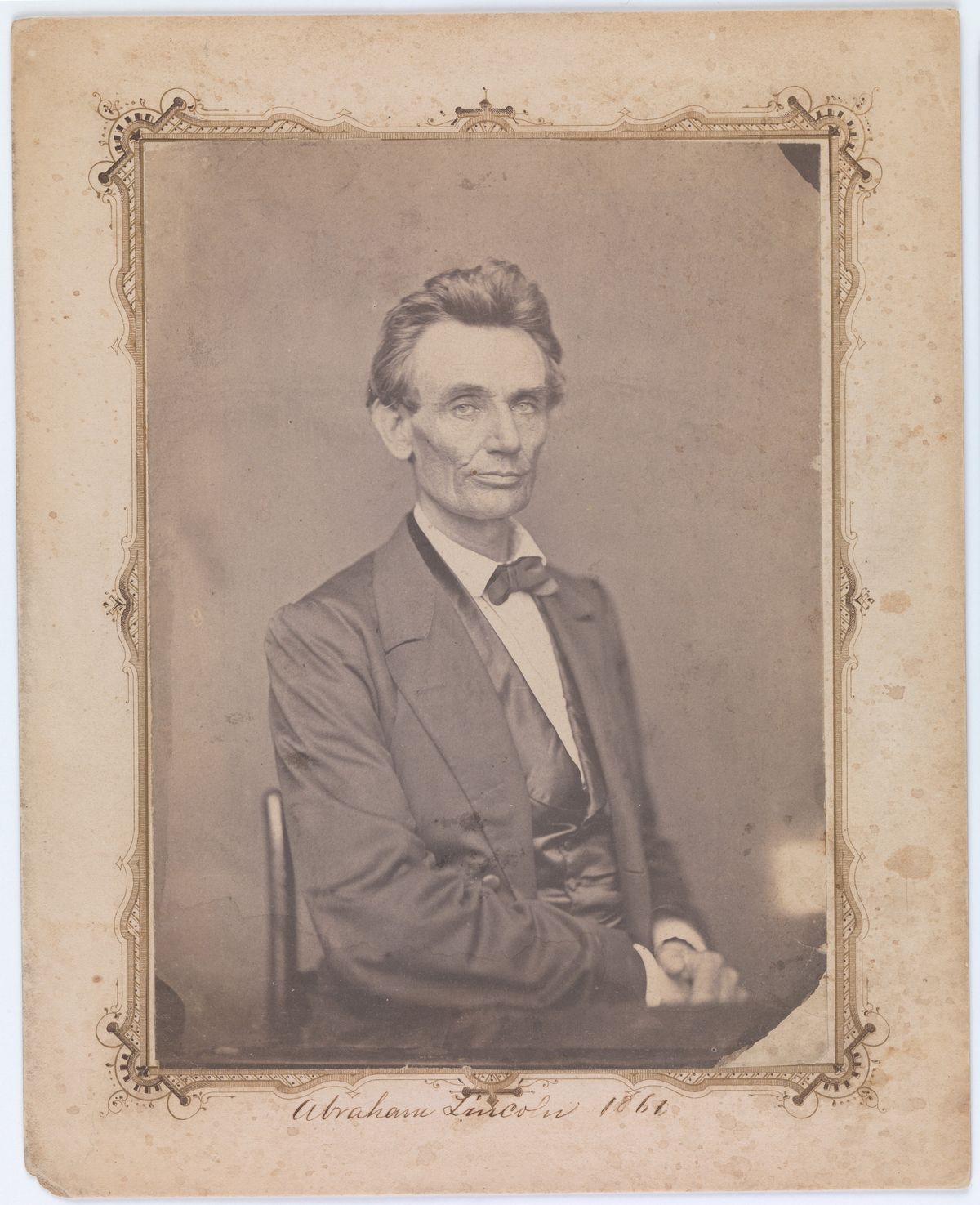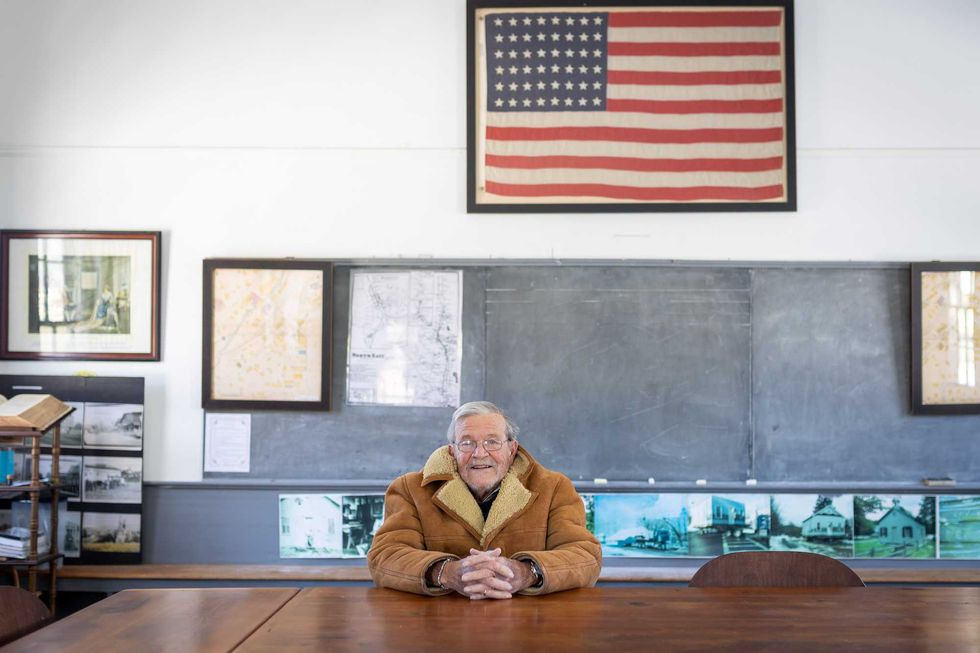Gone With The Winsted: The Civil War in The Litchfield Hills

President Lincoln by William Marsh, 1860.
The Metropolitan Museum of Art

President Lincoln by William Marsh, 1860.
In 1861, following the election of Abraham Lincoln to the United States presidency on a platform to prohibit the legal slavery of African Americans, seven southern states seceded from the country, and the American Civil War began.
While no battles were fought on the soil of Connecticut, Peter C. Vermilyea has gone to lengths to detail the political climate of Northern communities and military recruitment efforts in the early years of the conflict in a new book from The History Press, “Litchfield County and The Civil War.” Vermilyea, a history teacher at Housatonic Valley Regional High School and the author of “Wicked Litchfield County” and “Hidden History of Litchfield County,” will appear at the David M. Hunt Library in Falls Village for a discussion Saturday, March 2, at 2 p.m.
At the time of Lincoln’s election, three local weekly newspapers served Litchfield County — The Litchfield Enquirer, The Winsted Herald, and The Housatonic Republican — and the area had entered a period of economic stagnation after the uptick in enterprise when the Salisbury Furnace produced the majority of cannons used in the American Revolutionary War. The region’s swampy meadows and rocky soil, Vermilyea points out, did not attract any swell in the population size following America’s independence, especially after the county’s iron mines and furnaces were acquired by the Barnum and Richardson Company.
Still, these underpopulated Northwest Connecticut towns wanted to be represented in the war and were resolute to have area men in prominent positions in the state’s regiment. Vermilyea writes that the average Litchfield County recruit for the 19th Connecticut Infantry Regiment, which served in the Union Army, was 27 years old, equally likely to be married or unmarried, and thanks to “the county’s long-standing support of public education… 95 percent of its men who marched off to war in the summer of 1862 were literate.” From a photo of the infantry preserved by the Litchfield Historical Society, we also know the majority were in possession of hefty, dark mustaches on their upper lips. Nearly half were farmers, and many were Irish, thanks to the efforts of Irish-born Michael Kelly, who worked to enlist the considerable immigrant population of the town of Sharon.
Litchfield’s Camp Dutton training ground, which has been the site of contemporary Civil War reenactments, was a place of maturation for the twentysomething-aged soldiers in more than one way — swaths of young women were regular visitors, the sight of fitted bodices and floor-skimming skirts as visible as any Prussian blue military coat. The era’s more cordial aspects of courtship had been evidently thrown out the window in wartime, leading to more lax views on a flirtatious brush of one’s lips on a soldier. Affection from these young women was perhaps seen as more permissible, considering the likelihood that these men would never return home. The Enquirer lamented that “the very flower and cream of our county — the best and dearest to many of us… we shall never see anymore.”
In one letter home, a soldier at Camp Dutton wrote that a certain Lieutenant Frederick Barry “spent this p.m. and evening with Miss Alice Marsh, the most beautiful lady that has visited our camp… I was quite fascinated by Miss Alice the very first time I saw her… and as I think Lieut Berry the finest looking man in our regiment, it is not strange to think that I should wish there might be a Mrs. Lieut B from New Milford before we go.”
In 1864, after the men of Camp Dutton had been stationed guarding the Washington capitol from Virginia for 20 long months, battling the threat of disease rather than the threat of Confederate violence, they joined The Battle of Cold Harbor near Mechanicsville. It was an unmatched battle for the Union soldiers, resulting in an unnecessary litter of corpses and the Union “suffering more than three hundred casualties in about an hour of fighting.”
“Litchfield had approximately 3,200 residents when the war began and sent 299 men off to war,” Vermilyea records. “27 were killed or mortally wounded, another 27 died of disease and five died in prisoner of war camps.” In many ways, Camp Dutton and the promise of valor had been the highest point of Litchfield County’s Civil War effort.
Ralph Fedele sits at a desk in the historic Irondale Schoolhouse, which he led the effort to relocate to downtown Millerton.
MILLERTON — After serving for 12 years on the North East Town Board, Ralph Fedele says he has only one regret.
“I wish I could be called a ‘local,’” he joked with a warm, booming laugh.
Fedele moved to Millerton from New York City 37 years ago, in 1988, and has since worn many hats — volunteer, historian, advocate, elected official — yet he still doesn’t believe he’s earned that title.
“I’m a transplant,” he said matter of factly. “I’m from the city.”
Before settling in Millerton, Fedele spent 25 years working in merchandising at JCPenney.
His roots, however, trace back to Rhinebeck, where he grew up on a 97-acre farm and enjoyed what he describes as an idyllic childhood.
“It was marvelous,” he said, with a twinkle of nostalgia in his eyes. As a boy, he climbed apple trees, spent hours in the family barn’s hayloft, played with neighbors until sunset, and helped his Sicilian grandmother — his nonna — in the garden. Today, Fedele wears her ring. “Any time I’m a little depressed or I want to remember,” he said, “I can talk to her.”
Growing up with an Italian grandmother sparked a lifelong love of history and culture. That curiosity eventually took Fedele to Italy, where he visited the church in which his grandmother was baptized. “Because I love history so much, I wanted to know where my grandmother was from, so I traveled to her village in Sicily.”
Along the way, he uncovered another piece of family history. His great-grandfather, Giovanni Nicolini, was a noted Italian sculptor whose work still stands outside Palermo’s Teatro Massimo, the largest opera house in Italy. Fedele later made a pilgrimage there and photographed his ancestor’s name on the bronze plaque outside of the theater.

The Irondale Schoolhouse
Years after settling in Millerton full time, Fedele was driving north on Route 22 when he spotted an old, classic building and couldn’t stop thinking about it.
“It was in dire straits,” he recalled. “Right on the road, but beautiful. I remember thinking, ‘Wouldn’t that be a great building to move into the village?’”
That moment would eventually turn into Fedele’s lasting legacy.
He left his post at the North East Historical Society to found Friends of the Irondale Schoolhouse, leading an eight-year effort to “move, restore, and repurpose the building.”
Supervisor Chris Kennan said the project remains inseparable from Fedele’s name. “Every time I pass by the Schoolhouse, I think of Ralph,” Kennan said. “It was his vision and persistence that enabled this dream to become a reality.”
Fedele joked that people may have thought he was crazy during the lengthy restoration. “I was a tyrant,” he said with a laugh. “I really made sure that we were able to get it done.” The effort required coordination with the state, the county, village and town officials, and his newly assembled nonprofit board.
As a self-proclaimed history buff, Fedele didn’t stop at the restoration. He found a list of students in old records and did what any determined historian would do. He opened the telephone book and started making calls.
Eventually, he tracked down one of the schoolhouse’s original students — Mary (Mechare) Leitch — who, at the age of 101, returned to the building after renovations were complete.
“It was a marvelous time,” smiled Fedele. “I was so happy to see her.”
‘Trust is earned’
Today, even though he won’t call himself a local, Fedele is a familiar fixture in town. You can find him each week enjoying conversation and a cup of coffee at Talk of the Town Deli, or getting stopped in town by neighbors and friends for a chat.
“I have gained the trust and confidence of a lot of people,” Fedele said. “It comes a little bit at a time. Trust is earned.”
Not only has Fedele served as a town board member, he has volunteered for Townscape and served as the president of the North East Historical Society. He was also one of the first advocates of preserving history by fixing toppled gravestones at the Spencer’s Corners Burying Ground.
His service was formally recognized at his final Town Board meeting through a resolution commending his three four-year terms as councilman, citing his “good humor, kindness to all and deep concern for the community’s senior citizens and for those living on fixed incomes.”
An emotional Fedele addressed the room with a mantra he often repeats. “When you leave, leave this place a little bit better than you found it,” he said. “That’s what I have always tried to do.”
Neighbors react
During the public comment, several residents stood to thank Fedele.
Claire Goodman, a member of the village Zoning Board of Appeals and Townscape volunteer, said Fedele was among the first to welcome her to Millerton.
“Whether we’re standing out in the cold, scrubbing tombstones at Spencer’s Corners, or ringing the bell at the schoolhouse, you always have such grace and you’re such a gentleman.” She added, “The way you laugh, it opens my heart.”
Kathy Chow, who serves on the Conservation Advisory Council and the Climate Smart Task Force, referred to Fedele as a “pitbull,” adding, “We all have hard things that we do, and we keep pushing at it, but you’re the one who makes me think I can keep going.”
Fedele describes his retirement from the town board as bittersweet. “I’m going to miss this,” he said. “I really am.”
Mad Rose Gallery on Route 44 in the Village of Millerton is decked out with lights and decorations to celebrate the holiday season.
MILLERTON — The Village of Millerton is inviting residents and businesses to enter its annual house decorating contest, with judging now underway through Dec. 28.
Awards will be presented in several categories, including Best Lights, Most Creative, Best Overall and Best Commercial Front.
Entries will be evaluated by a panel of judges using established criteria. Creativity will be judged based on originality, variety of materials used and the use of homemade vs. commercially made decorations. Appearance will consider color coordination, balance and overall attractiveness, while effort will reflect the time and energy put into preparation and presentation.
Judging will be conducted by drive-by observation between 6 p.m. and 11 p.m., and displays must be clearly visible from the street side of the house at night. People and pets may not be included as part of the design.
Winners in each category will receive a gift basket, gift certificates and recognition in The Millerton News. Awards will be distributed on Friday, Jan. 9, 2026.
The contest is open to residents and businesses in the Village of Millerton and the Town of North East. Entry forms can be obtained from Village Hall or at villageofmillerton-ny.gov.